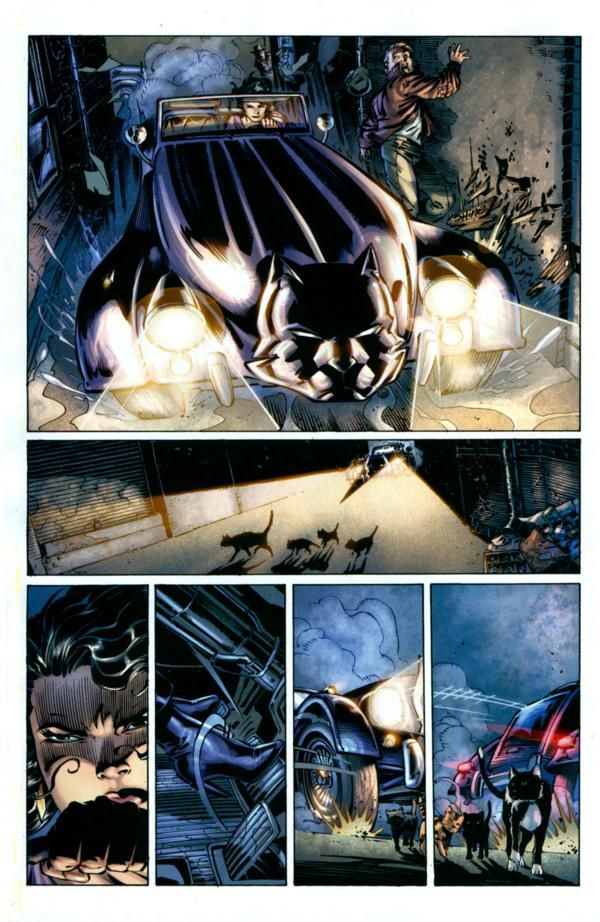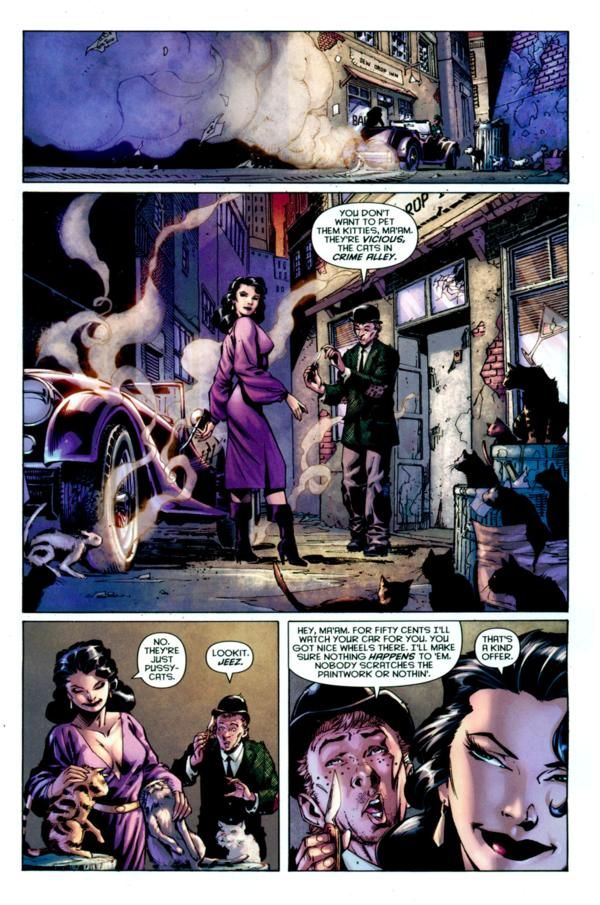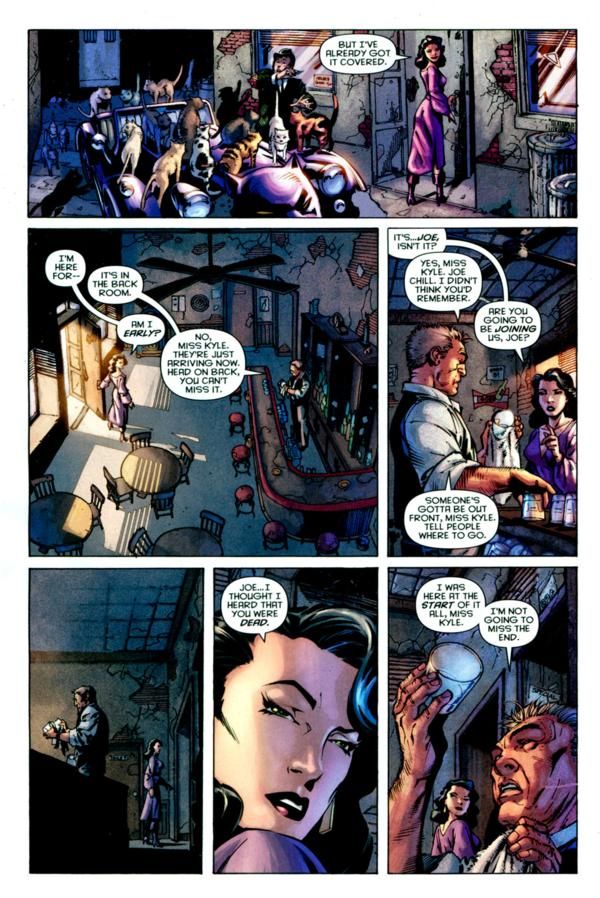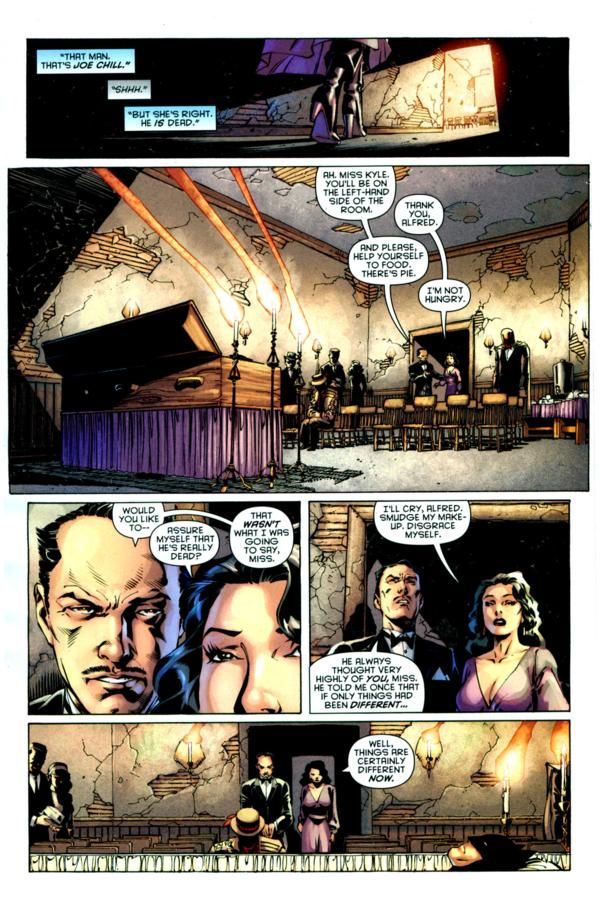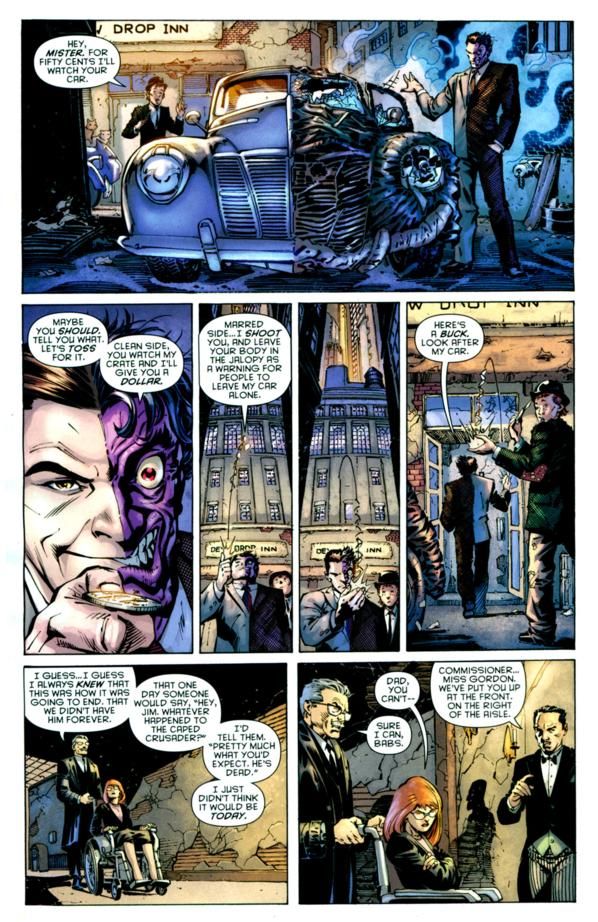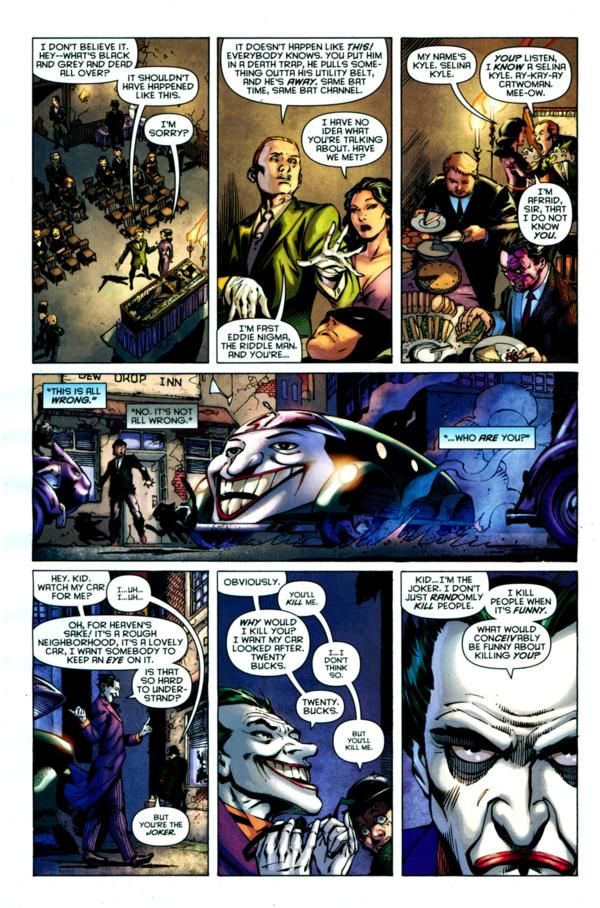Here is the latest in our year-long look at one cool comic (whether it be a self-contained work, an ongoing comic or a run on a long-running title that featured multiple creative teams on it over the years) a day (in no particular order whatsoever)! Here's the archive of the moments posted so far!
Today we look at Neil Gaiman's "Whatever Happened to the Caped Crusader?"
Enjoy!
Now, perhaps naturally, Neil Gaiman's two-issue stint on Batman (following Grant Morrison and preceding the "Dick Grayson takes over as Batman") was hyped to the point where anything outside of the quality equivalent of "Whatever Happened to the Man of Tomorrow?" would have been a let down, but I don't think we should let that affect our thinking in whether it was a cool comic, because it still was.
The basic concept of "Whatever Happened to the Caped Crusader?" (told over Batman #686 and Detective Comics #853) is that a bunch of Batman's friends and foes show up at Crime Alley for Batman's funeral. Then, much like Gaiman's classic "World's End" storyline in Sandman (which, in turn, was a cool riff on The Canterbury Tales), they stand up to tell stories of how they killed off Batman.
The first story is told by Catwoman, and it is a great mixture of both Robin Hood's death (well, one version, at least - and even then, only one part of it) and classic noir stylings.
The second story is by Alfred, and it is a stunning take on the whole Batman Rogues Gallery. Very, very cool. Essentially, think of Alfred hiring actor friends to pretend to be super criminals. What a clever idea and the sadness of it all is executed beautifully by Gaiman.
The whole book is put together beautifully, as it is clear that Gaiman and artist Andy Kubert have spent a whole lot of time planning this book out. Kubert's pencils are as impressive as they've ever been in the past, and he captures the various styles requested of him by Gaiman wonderfully.
The little touches really made the comic, though, especially the introduction of the major Batman villains, from Catwoman to Two-Face to Joker. Their entrances were almost note-perfect.
Here they are, so you can marvel at the touches by Gaiman and the impressive art by Kubert...
Batman fans who appreciate the history of the character sure are in for a treat, as Morrison's great Last Rites storyline is followed up by this story, which is likely even better.
Both amazingly dense and lush stories evoking the past of Batman but also telling an interesting story in the present.
After spending so much time on the stories in the first part of the tale, it put Gaiman into a bit of a corner with what should he do with the second part (with so many characters still left to tell their tales), and he quickly addresses it by having a variety of characters telling short stories of how Batman died. Seven different stories on six pages - and they're all really strong work by Gaiman and Kubert, giving us heartfelt stories told in one page each (and one page with TWO stories - Harvey Bullock and Clayface).
Then Gaiman takes his best shot at telling a "How Batman dies" story without actually saying "Batman dies," because, well, Gaiman knew very well that Batman does NOT die here. So he has Batman clearly establish that this all very well could be a Near Death Experience, or in other words, this could all be a sort of hallucination in Batman's mind.
That's a smart way to handle it, because, really, there was no other way you COULD play this.
Andy Kubert does a nice job with the pencils in the second part, but not quite as good as part one (but part one was so strong that it would be hard to match that success, especially since he had a lot more lead time to work on part one than part two)
Gaiman picks up a few notes that Morrison left at the end of his run, basically the whole "Batman never gives up" tune, which Gaiman plays well with a montage of cool Batman scenes mixed with some other possible deaths. Gaiman makes a strong point where he argues, of COURSE Batman dies, that's the whole POINT of Batman - Batman IS going to die, and we should not expect anything other to happen to him. You basically would HAVE to kill him to stop him, so going in, it is not a surprise that he will die. I think that's a nice take on the character.
The book ends with an interesting children's book homage that, while well done (by both Gaiman and Kubert, who depicts the effect of a child "reading" Batman's life), seemed a bit out of place here, seeing as how Gaiman introduces the notion of the book in this very issue and then calls back to it at the end like it was an established part of Batman/Bruce Wayne's back story.
Still, it's well done, just out of place.
It's a nice little two-part story that I think will be an enjoyable reading experience for years to come, well after Bruce Wayne is back as Batman.
The story is collected into a book with the other short stories Gaiman has written about Batman over the years (two stories from DC's Secret Origins, written before Gaiman was a superstar, plus one short black and white Batman story - the best story in the whole book is likely Gaiman's Riddler Secret Origin story).
NOTE: This is basically what I said when the story first came out - BC


